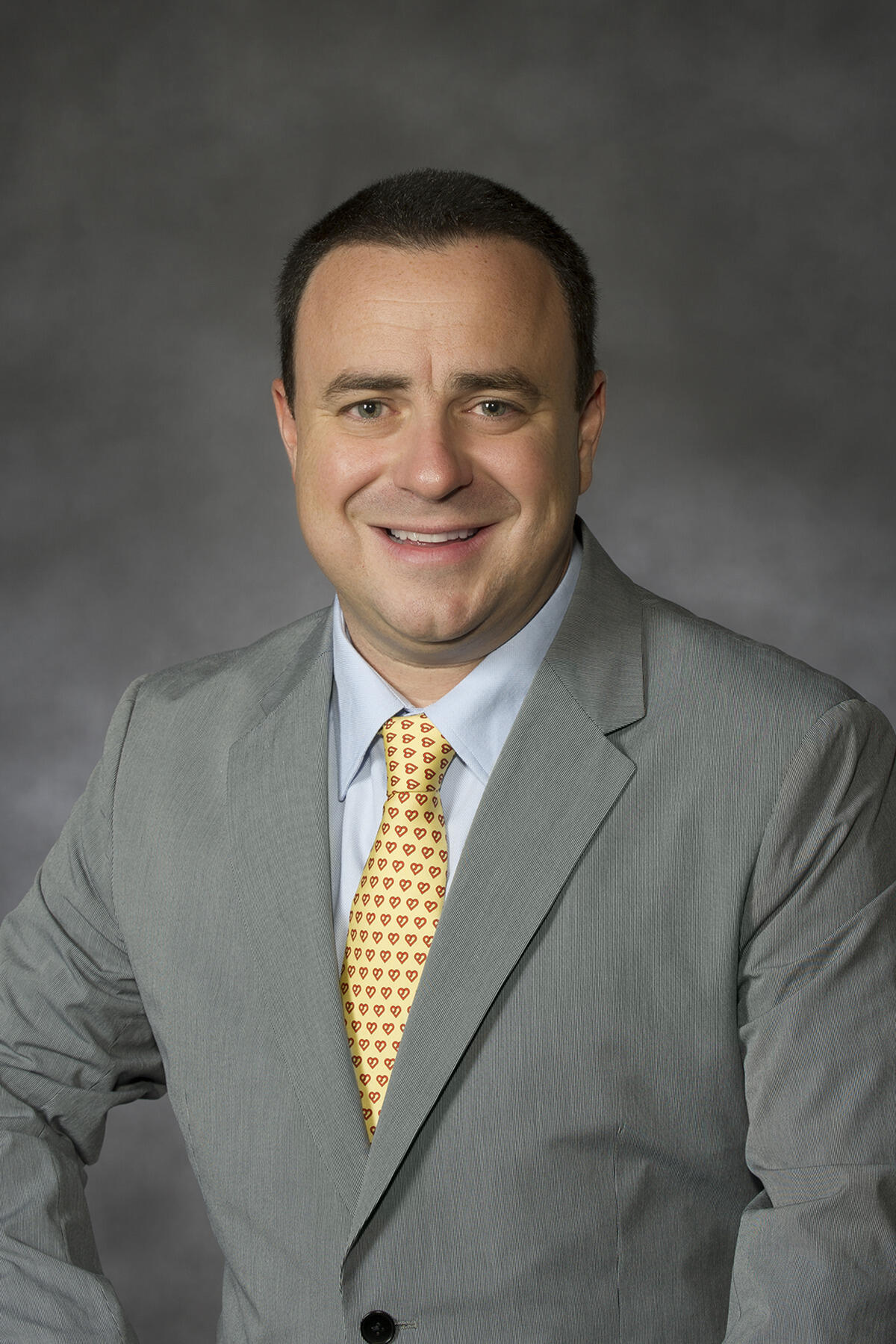
Sept. 6, 2019
A taste of Italy: Professor’s clinical research examines whether food really is the best medicine
Share this story
Virginia Commonwealth University assistant professor Salvatore Carbone, Ph.D., smiles as he fondly recalls dinners with his family during summers spent in Sperlonga, Italy, a coastal town overlooking the Mediterranean Sea.
“Extra-virgin olive oil was on everything, from pasta to fish and vegetables,” he said.

The Italy native joined VCU to study under Antonio Abbate, M.D., Ph.D., soon after completing degrees in dietetics and nutrition in his home country. As a research nutritionist at the VCU Health Pauley Heart Center, Carbone routinely saw patients who suffered from obesity and heart disease. He wondered how diet contributed to their health conditions.
“Most people in Italy follow a mostly Mediterranean diet, which is rich in unsaturated fat,” Carbone said, referring to the nutrients sometimes called “healthy fats” that are found in foods such as extra-virgin olive oil, nuts and avocado. “In the U.S., there is a trend of promoting a low-fat diet to prevent cardiovascular diseases, but in Mediterranean countries, where the risk of developing things like heart disease and diabetes is significantly lower, the diet tends to be high in healthy fat. I thought, ‘Why can’t we try that in the U.S.?’”
The thought sparked a series of preclinical and clinical research studies. Through these studies, Carbone attempted to determine if a diet rich in healthy fats that resembled the Mediterranean dietary pattern could improve body composition, cardiac function and, ultimately, exercise capacity in people who were obese and had a specific form of heart failure called heart failure with preserved ejection fraction.
Also known as HFpEF, heart failure with preserved ejection fraction occurs when the heart pumps blood and contracts normally, but is too stiff to fill and relax properly. About 5.7 million adults in the U.S. have heart failure, according to the Centers for Disease Control and Prevention, and about half of those people present with HFpEF. In the U.S., more than 80 percent of people who have HFpEF are overweight or obese.
“There is an urgent medical need for therapy,” Carbone said, adding that no Food and Drug Administration-approved therapies exist for people who have obesity and HFpEF. “Often, we think about pharmacologic approaches, but drugs often only target one thing. With the dietary intervention we are proposing, we hope to target multiple risk factors to eventually improve health outcomes.”
In August, the VCU C. Kenneth and Dianne Wright Center for Clinical and Translational Research awarded Carbone with a Clinical Research Voucher to support his work. The Clinical Research Voucher Program was established this year to increase use of the VCU Medical Center Clinical Research Unit, a 10,000-square-foot space on the eighth floor of VCU Medical Center’s North Hospital that provides VCU Health clinicians with the physical space and support necessary to conduct clinical research. Vouchers are the equivalent of up to $10,000 in VCU Health services for research.
“The Wright Center has been extremely helpful,” Carbone said. “Just having the space and time available at the Clinical Research Unit, as well as people trained in research, helps us immensely.”

From observation to action
Soon after observing differences between the foods he grew up eating and the typical American diet, Carbone launched a preclinical study in 2014. In a laboratory, he fed mice a high-sugar and high-saturated fat diet.
“Simply putting mice on an eating regimen resembling a Western diet impaired their cardiac function even before the mice became obese,” Carbone said of the preclinical study results, adding that he researched the components of an average American eating pattern in scientific journals to create a similar diet for the mice. His findings in the literature were reinforced with what many of the patients with heart disease at VCU Medical Center reported eating: saturated fat from animal-derived products including beef, butter and excess dairy products, and sugar from sweets and sodas.
Around the same time that Carbone concluded the preclinical research, Abbate and VCU School of Pharmacy professor Benjamin Van Tassell, Pharm.D., were leading a large clinical trial studying patients who had HFpEF. They allowed Carbone to interview 23 of their patients about their diet. Through the interviews, he found that patients who consumed more healthy fats had better exercise capacity, which was measured as peak oxygen consumption during a cardiopulmonary exercise test, than those who didn’t. He also found that increased consumption of healthy fat was associated with improved cardiac function and better body composition.
“Based on that study, we knew we had a promising association, but association doesn’t mean causation,” Carbone said.

Rather than testing his theory on human subjects right away, Carbone went back to the lab. This time, he fed mice two different diets with the same amount of calories and total fats — one high in saturated fat and low in healthy fats, and one low in saturated fat and high in healthy fat.
“Within eight weeks, which is the equivalent of several years for humans, we found that the mice who ate the diet higher in healthy fats had better cardiac function, less weight gain and better glucose metabolism and insulin resistance than the mice who ate the same amount of calories, but more saturated fat,” Carbone said. “That suggested to us that perhaps it is not just the quantity, but the quality of the diet that we eat that plays an important role in overall health.”
After conducting the second round of preclinical research, Carbone felt ready to launch a feasibility study to ensure that people would comply with a prescribed diet of increased unsaturated fatty acids. “If I was in Italy, I wouldn’t have needed to do a feasibility study because people are already consuming most of the food we recommend in our study, but here we wanted to make sure people knew what the foods were and how to incorporate them into their diet,” he said.
With pilot funding from the Pauley Heart Center and the VCU School of Medicine Department of Internal Medicine, Carbone and his research team enrolled nine VCU Health patients in a 12-week dietary intervention aimed at having participants consume a recommended daily amount of foods rich in unsaturated fatty acids. The results of the study, which published in August in the Journal of the American College of Cardiology Basic to Translational Science academic journal, demonstrated for the first time in scientific history that a dietary intervention aimed at increasing unsaturated fatty acid consumption was feasible and had the potential to improve cardiorespiratory fitness in people with severe obesity and HFpEF.
“Larger randomized controlled trials to test the efficacy of unsaturated fatty acid supplementation on cardiorespiratory fitness and clinical outcomes, as well as understanding the mechanisms through which unsaturated fatty acids may exert these beneficial effects are clearly warranted,” Carbone said in the journal article.
Simply putting mice on an eating regimen resembling a Western diet impaired their cardiac function even before the mice became obese.
Supporting success
Based on the data obtained through the feasibility study, Carbone was able to secure a three-year, $231,000 grant from the American Heart Association in April to continue his research. The Clinical Research Voucher through the Wright Center supplements the research he is conducting through the AHA-funded study.
Carbone, now an assistant professor in the VCU College of Humanities and Sciences Department of Kinesiology and Health Sciences, hopes the data he gathers from his work at the Clinical Research Unit will inform a larger, multicenter clinical trial that will examine the effects of a diet rich in healthy fats on clinical outcomes, such as reduced mortality and reduced risk of hospitalization for HFpEF.
“Hopefully, if this study goes well, we will be able to do a larger study where we don’t just look at exercise capacity and biomarkers, but also clinical outcomes such as hospitalization and mortality,” he said, adding that he plans to apply for funding from the National Heart, Lung, and Blood Institute at the conclusion of the current clinical research study. “A dietary intervention aimed at improving the quality of the diet, independent of changes in daily caloric intake, has the potential to change the way we treat patients with obesity and HFpEF.”
Subscribe to VCU News
Subscribe to VCU News at newsletter.vcu.edu and receive a selection of stories, videos, photos, news clips and event listings in your inbox.



